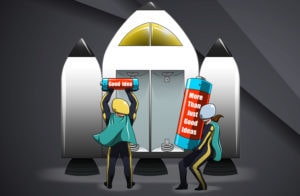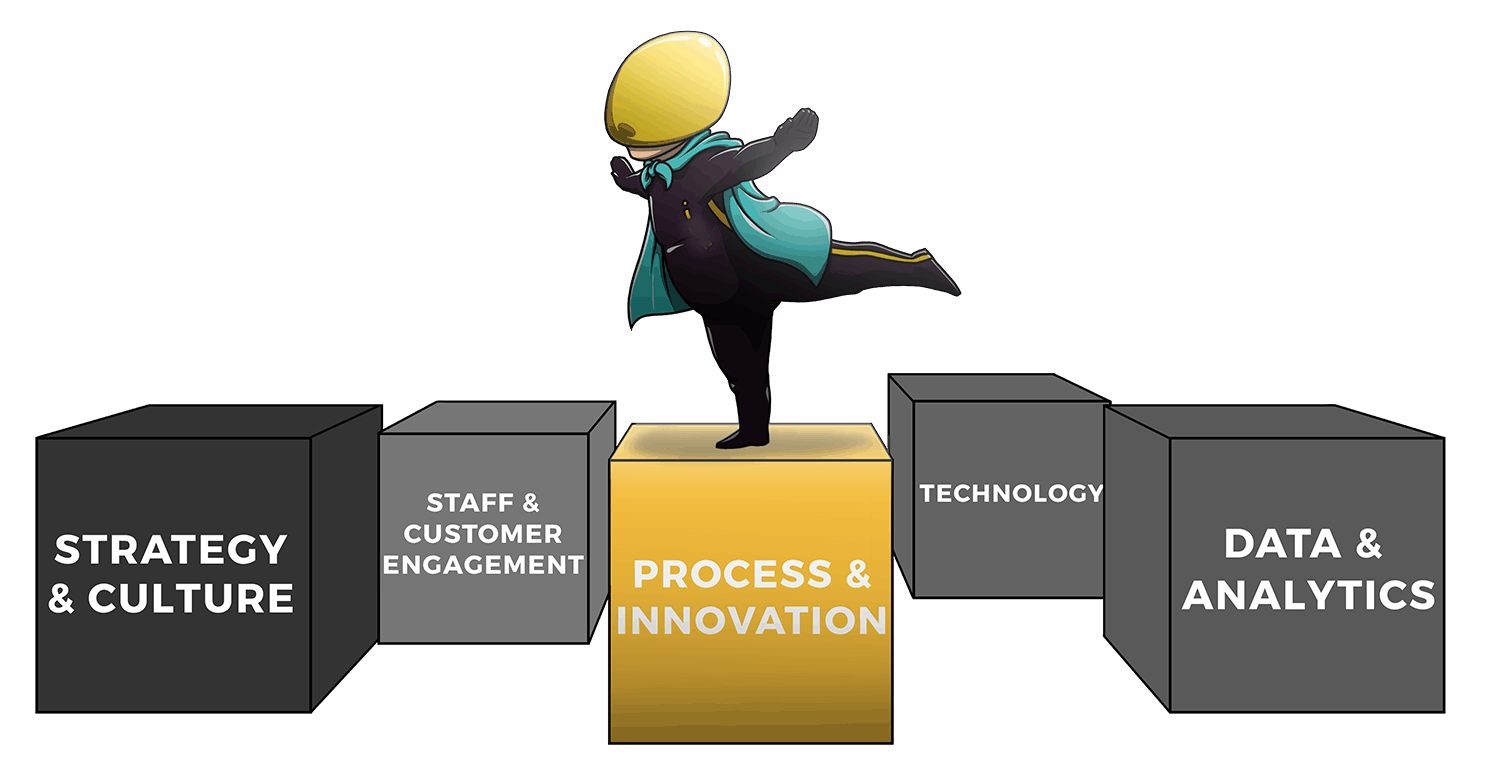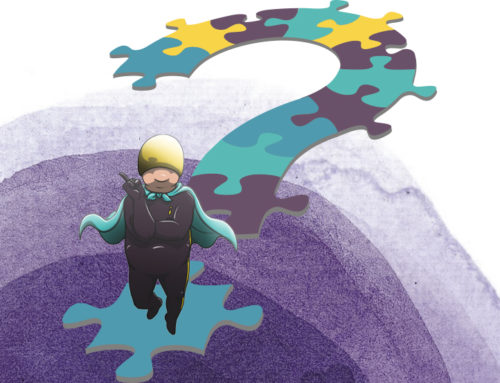
In the 5 Change Blocks of Digital Transformation we highlight the ‘process of innovation’ as a key element. But what do we mean by “innovation”?

According to the website Idea to Value, innovation ranges from “The application of ideas that are novel and useful” to “Turning an idea into a solution that adds value from a customer’s perspective.”
According to Wikipedia, Innovation can simply be defined as a “new idea, more-effective device or process.” However, they also go on to say that innovation is often also viewed as the “application of better solutions that meet new requirements, unarticulated needs, or existing market needs.”
In my experience, in the context of Digital Transformation, I think none of these explanations work. Why? Because I’ve seen lots of businesses live by these guides, tick these boxes, perform these tasks and still fail. These businesses have conducted Sprints, Design Thinking workshops, created Agile workflows, developed a new product/service and yet it fails to be adopted by the customer.
So what have they all missed? They have all started from a good idea and not from a real customer problem. For innovation to work, we must diagnose the customer’s pain. I don’t mean looking at an existing process, product or service and improving on it. It has to come from a statement of customer pain that’s been proven and grounded in evidence so that the offered solution will be a no-brainer for customers to buy as a way to overcome their impediment.
I was working with a cutlery manufacturer whose idea of ‘innovation’ was to create sharper knives. The customer didn’t have a problem with knife sharpness. The whole idea was a distraction and the fact that it even got airtime at a leadership meeting was a waste of resource.
Whether you’re designing a chocolate chip cookie or a new microchip it must meet the customer’s perceived need. If it doesn’t, sales will be flat. Dramatic growth goes to the innovator according the Ionology Digital Transformation Framework. Modern business frameworks like this can calculate the likelihood of success, the market opportunity, empirically measure if a competitor can be displaced and customers convinced before the ‘innovation’ goes into production. To not use a modern framework to diagnose, create and deliver new competitive advantage, powered by innovation is like buying a record instead of streaming music. It may be quaint, retro and cool, but it’s a lot more hassle and the quality is not as good.
Innovation only works when we start with a customer’s perceived problem and fix it.



